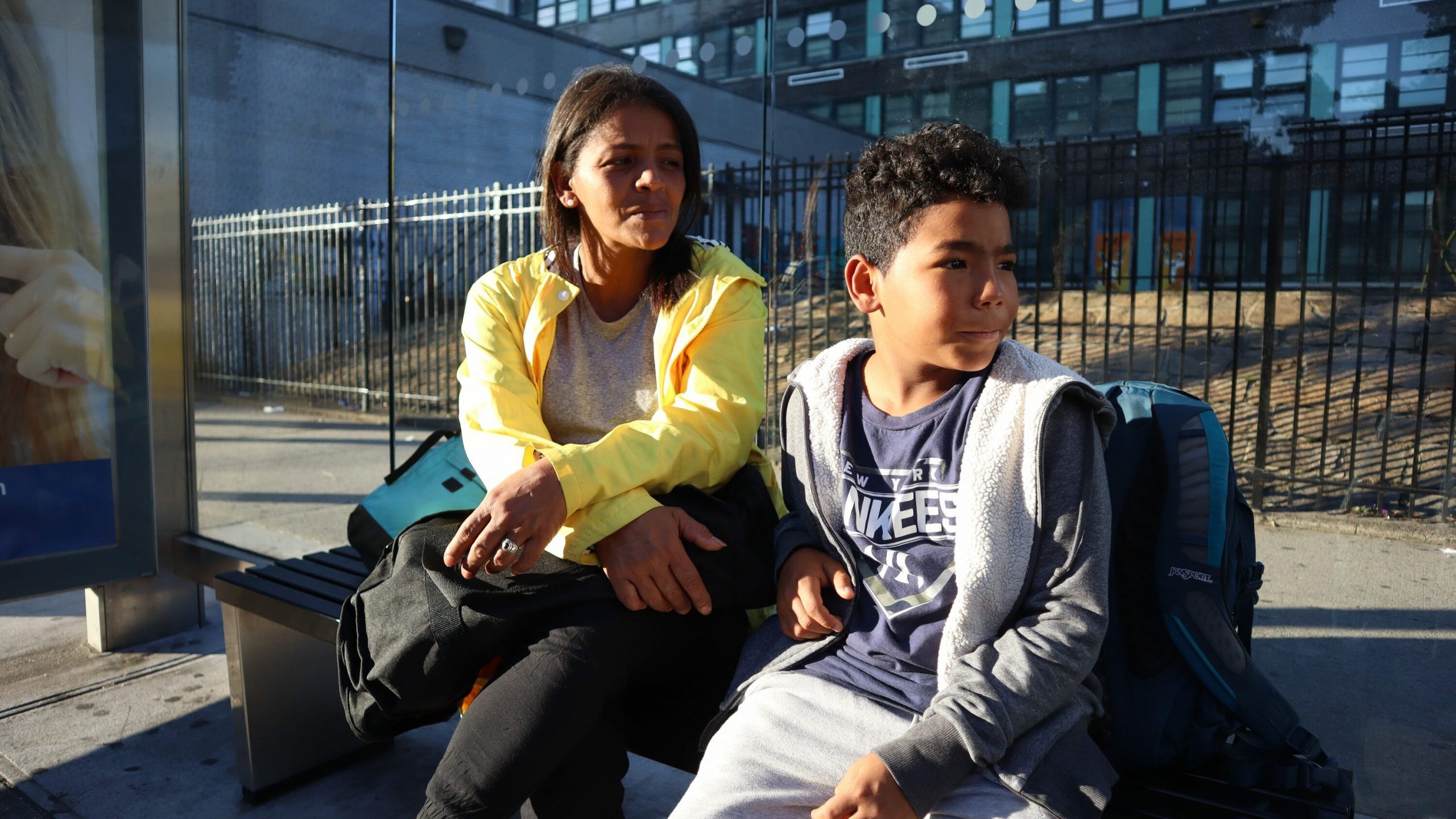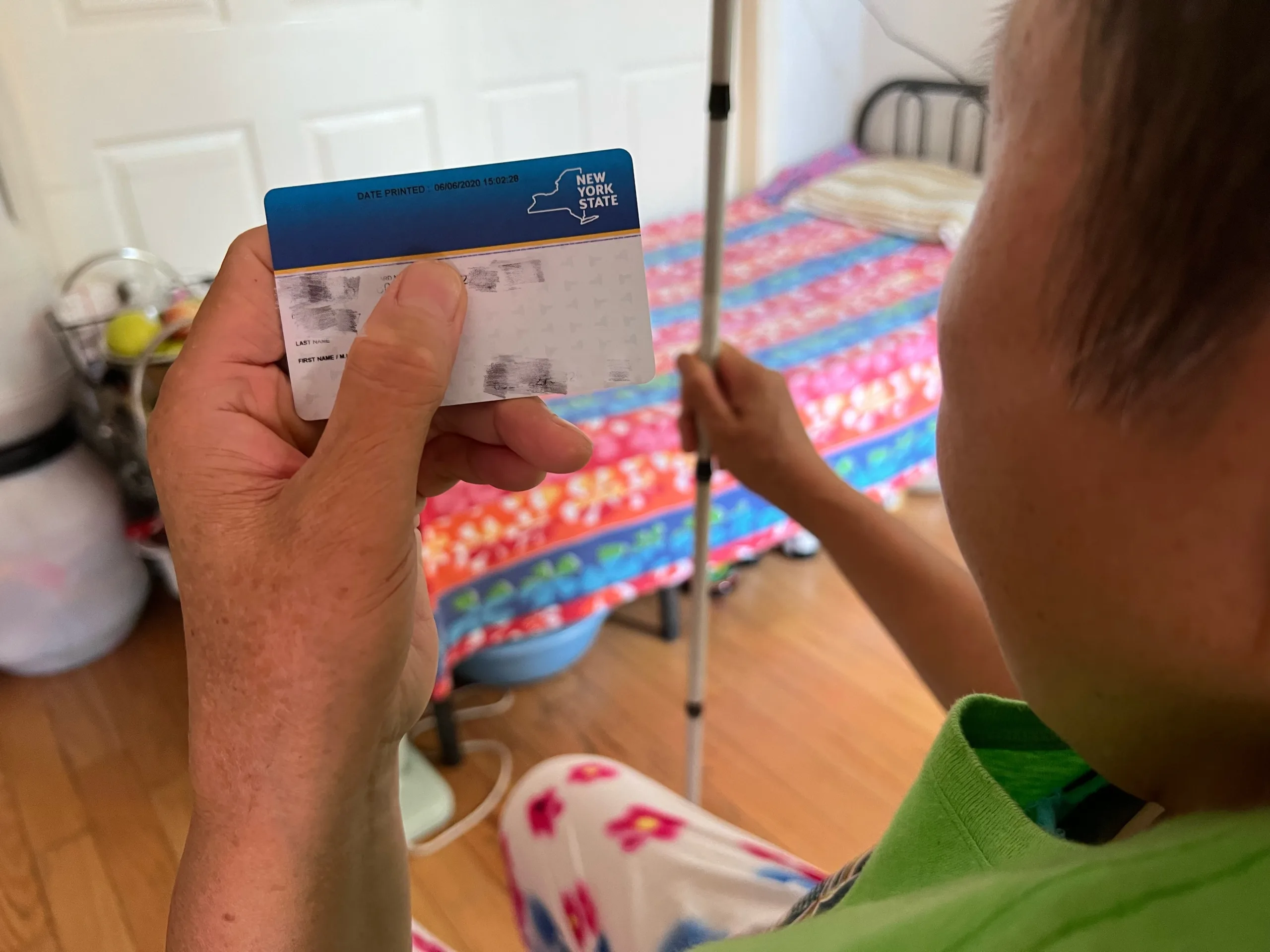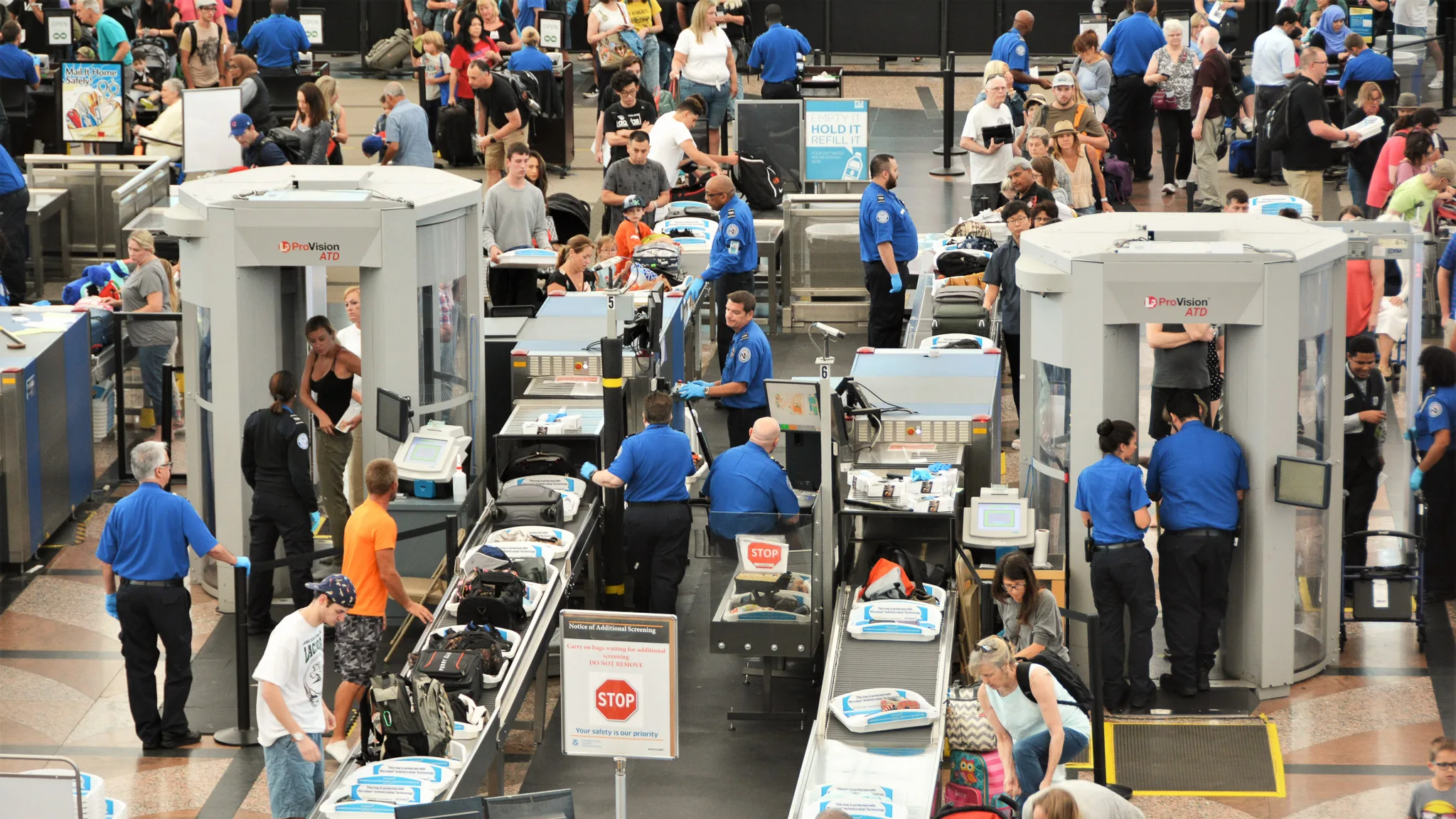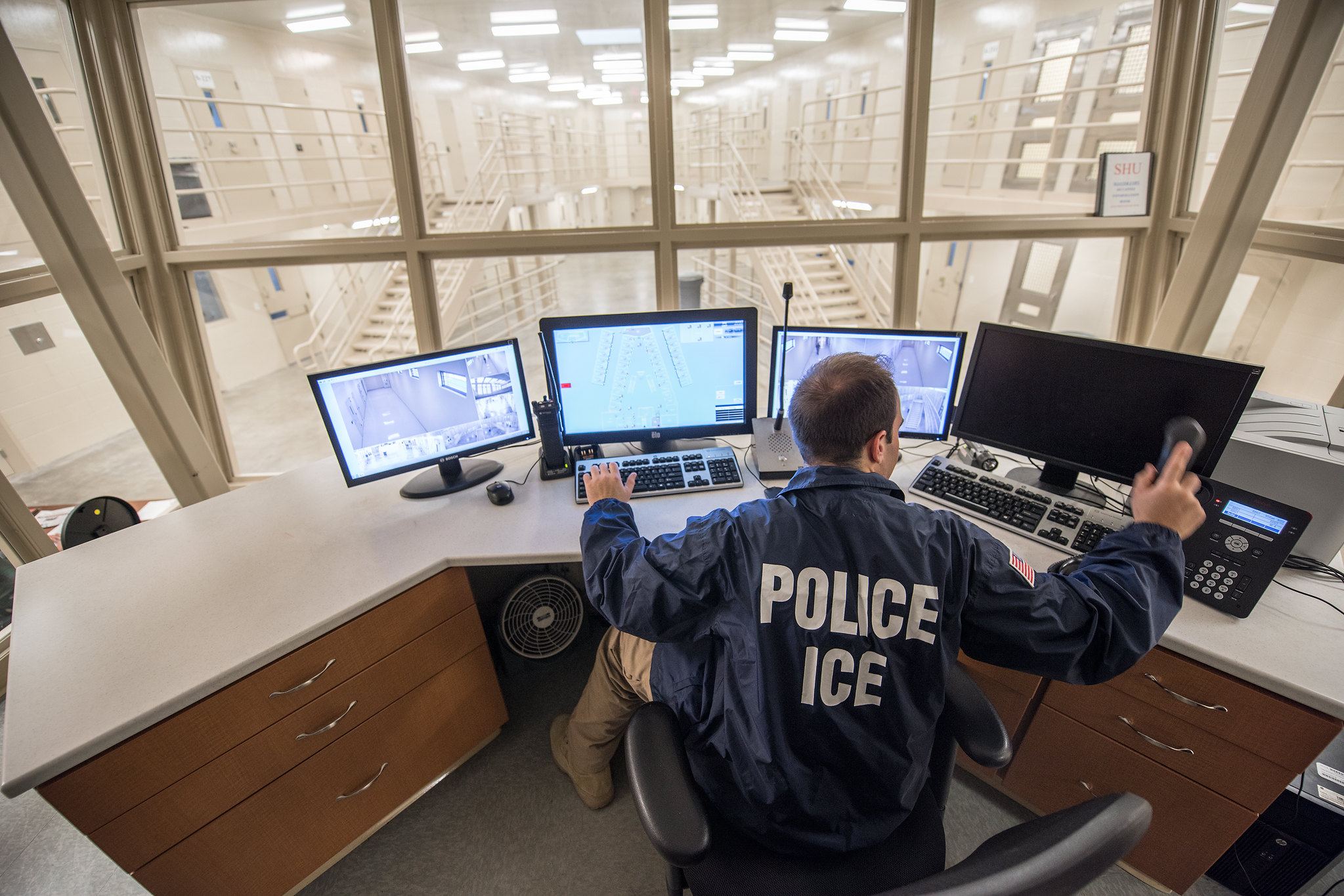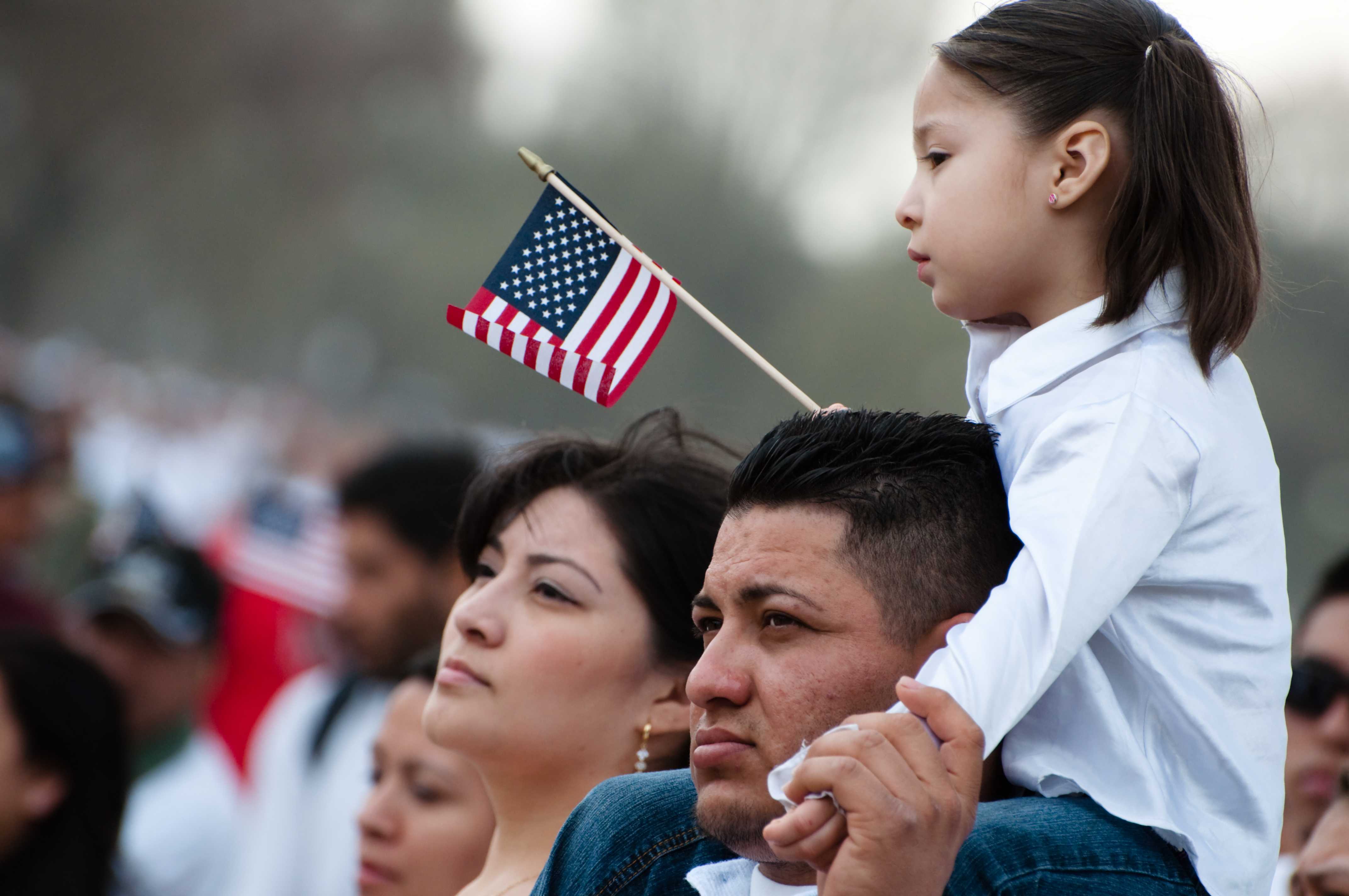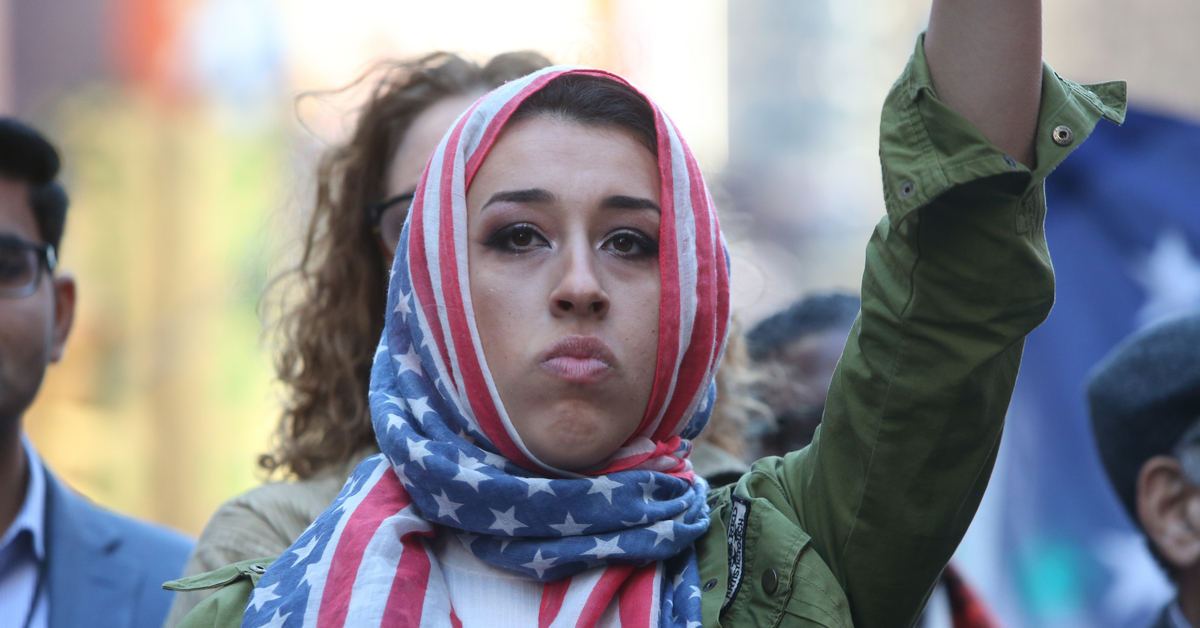Kenyon Madera Vazquez tries to avoid remembering his time in the jungle where he spent his 11th birthday. He traveled with his mother across seven countries and spent ten days in the perilous Darién Gap. At one point, the blisters on his feet became so painful that he couldn’t walk. There were moments of panic, like when the pair got lost off the path as it got dark, when Kenyon had no choice but to be the one to motivate his mother to keep going with strong words of encouragement. Sometimes there was nothing else to eat other than bread, crackers and tuna.
“I don’t like to think about it a lot, because it was horrible for me,” Kenyon, a constantly smiling 6th grade boy with black curly hair, said in a recent interview after his mother had picked him up from his school, PS/MS 5 Port Morris in the Bronx, on an October afternoon. His mother, Yulimar Vazquez Rico, sat beside him at a Popeyes Louisiana Kitchen on Grand Concourse with tears running down her cheeks as she heard her son recount his journey.
“I spent all day – 10 hours, 12 hours – walking,” Kenyon said.
Now, Kenyon has to figure out how to navigate his life in a new city in an unknown language carrying the trauma of his journey to New York with him every day.
At his hotel shelter – the Ramada by Wyndham in the Bronx – he shares a bed with his mother. There, Kenyon hasn’t made many friends because rules prohibit individuals from going into each others’ rooms. At his school’s after school program, Kenyon says he has to rely on other children who speak both Spanish and English to translate for him. The food at the shelter and at school leaves him hungry and sometimes he falls asleep during school hours, he said.
More than 5,500 newly arrived migrant children have been enrolled in New York City public schools, an estimate provided by recording the number of children living in temporary housing. City officials have scrambled to keep up with the number of new migrant children who have enrolled in schools, though the flow of buses coming to the City from Texas has significantly subsided.
Also Read: Homeless Students Are Guaranteed Access to Education Under the McKinney-Vento Act
In August, City education officials announced the implementation of Project Open Arms, a plan to help asylum seeking families going through the public education system. Chancellor David Banks said at an October press conference that the department is rolling out new “borough response teams” to organize donation drives for these families. More transitional bilingual educators are being implemented at schools, Banks said, and new bilingual teachers have been recruited from the Dominican Republic to city schools.
At the end of October, Banks announced that almost $12 million in additional funding would be given to schools experiencing more new student enrollment, with schools that have six or more new students in temporary housing receiving $2,000 for each student. “There are no easy answers here, we’re all very clear about that,” Banks said in October. “We’re figuring it out as we go, and doing the best that we can.”
But the experiences of children like Kenyon show that some migrant children and their families are still in need of additional support.
“When they come, they’re in survival mode. They have to deal with so many things at the same time. And that’s the challenge,” said Mariana Duenas, a senior case manager with Catholic Charities who has been working with families and children at the asylum seeker resource navigation center in Manhattan and elsewhere.
Migrant children need a holistic approach in support services, advocates say
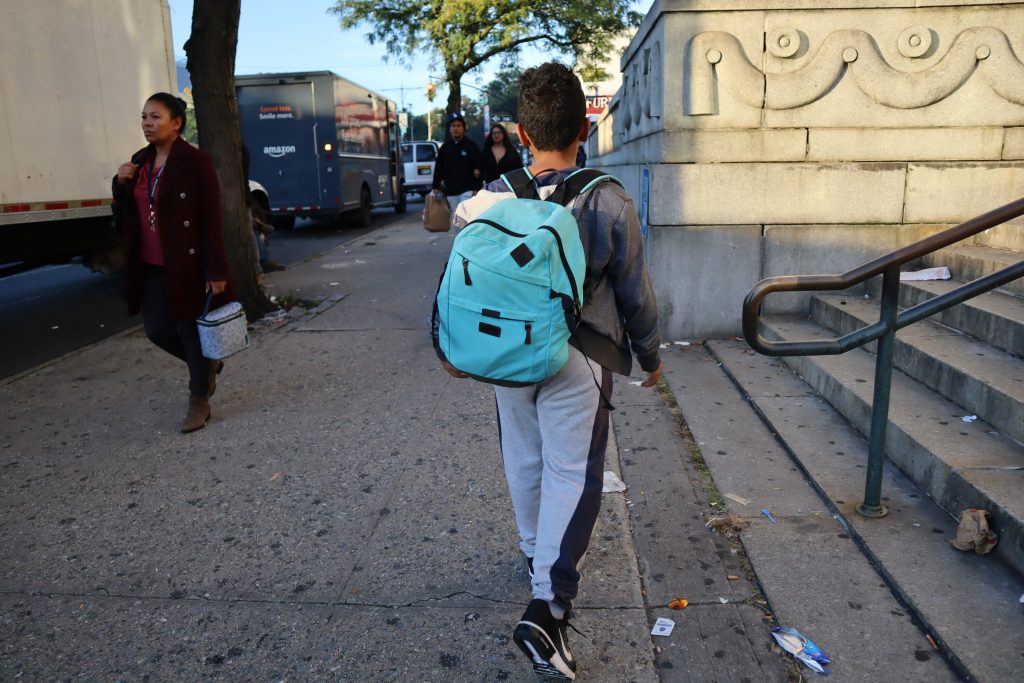
Vazquez Rico, Kenyon’s mother, says shelter social worker visits have been regular, but only focus on specific shelter issues and lack in-depth counseling. With little legal guidance, she still has not been able to obtain work authorization or a lawyer for her immigration case, and has not found regular employment. This leaves her without any income to support herself or her son.
“I feel uncertain about what is going to happen,” Vazquez Rico, 46, said. “If I’m going to get help or not.”
Advocates like Duenas, of Catholic Charities, say that the schools can provide a sense of stability and safety for the children like those she has met who have undergone extremely difficult experiences in their home countries, and during the trek to the United States.
Duenas said that a couple of families have told her that their children were assaulted during the trek to the United States. In another instance, a two-year-old girl she met who walked all the way through the jungle, decided upon her arrival in Texas that she was no longer going to walk.
Also Read: Why Can’t Minors with Special Juvenile Status Get Their Green Cards?
Often, it’s up to the parents to seek out the resources to address the emotional repercussions and trauma of children’s lives before arriving in New York. “The mental health component is really important,” Duenas said. “It’s a message that I personally recommend to parents. I say, okay: ‘You have really really to be in contact with social workers or the counselor in your school and explain to them the journey that those kids have been experiencing.’”
Nicole Wallach, a staff attorney with the Immigrant Students’ Rights Project at Advocates for Children, says that one school her organization spoke with has over 80 recently arrived migrant students.
“Their needs are not purely academic,” Wallach said. “They need more than just school, a classroom to go to….And they require a lot more support, they’re brand new to the City. They need knowledge and comfort and tools to know how to advocate and understand how to thrive and function in the New York City school system.”
Banks, the education Chancellor, has said that every school has access to a social worker, a school counselor, or an on site mental health clinic.
Months after first migrants are bused to the city, officials are still grappling with how to respond
Last week, migrants housed at a controversial tent shelter on Randall’s Island were taken to stay at a hotel in Manhattan. The tent shelter, which was framed by Mayor Eric Adams as a humanitarian response to the large number of migrants arriving in the City, but was condemned by immigrant advocates as akin to a “refugee camp,” will be closed down.
“I’m just really baffled by those who don’t realize the successful execution of a plan,” Mayor Adams said at a recent press conference, adding that the City was expecting to receive about 100,000 migrants. “Regardless of all the noise around us, we executed a plan that prevented this city from dealing with a major crisis.”
As of early November, almost 24,000 migrants have arrived in the City, many from Venezuela, according to city officials. Recently released figures from the City’s Independent Budget Office show that the City will spend at least an estimated $596 million over the course of a year for assistance to migrants, which includes the cost of shelter, public school, health services and legal assistance.
At the asylum Seeker Resource center in Manhattan, some migrants have been turned away and told to come back for January appointments, Gothamist reported.
Vazquez Rico, Kenyon’s mother, is grateful for the help she has found for her son. But the family still had to go through great lengths to find enough assistance. For weeks, Vazquez Rico trudged through three boroughs every morning to spend her days at a church in Bay Ridge where she could find hot meals, clothes, and a community of Venezuelans – where she also volunteered to help other migrants looking for aid.
Meanwhile, Kenyon adapts to his school and shelter in the city
On a recent Thursday afternoon after spending time at the Bay Ridge church, Vazquez Rico hopped on a crowded rush hour train at Atlantic Terminal in Brooklyn to go pick up her son after school in the Bronx. She swiped through pictures and videos of Kenyon as he crossed part of the jungle, slogging through the thick mud. “‘Let’s go, let’s go, you can do this,’” Vazquez Rico remembers Kenyon telling her during the trek.
They arrived to the City about three months ago after a 40 hour bus ride from Texas to Washington D.C., and another bus journey to New York. Her son, overall, is happy in the U.S., she said. Still, Kenyon is acutely aware of the challenges both he and his mother face in the city. “My mom doesn’t have money,” Kenyon said.
As his mother picked him up that Thursday, Kenyon walked out of his school wearing a Yankees shirt and chatting enthusiastically. “Mom, I got a 10 on my math homework!” he told her.
The pair hopped on a crowded bus that would take them closer to their shelter. But that day, it was time for a treat. His mom agreed to stop at a Popeyes before going home. Every day, Kenyon was hungry, he said. They didn’t have a kitchen at the hotel shelter and the microwaveable food they were given there was sometimes several days old. “We have to stop the urge to throw up just so we can have a plate [of food] to eat at night,” Kenyon said.
At Popeyes, he stuffed the chicken nuggets into his mouth. But he occasionally became concerned that he was eating too much. “Let’s save it to take home, so that it can last for tomorrow,” he told his mom. But he kept picking at the chicken, unable to stop himself from eating more. “I’m so hungry,” he said.
At school, Kenyon said, the food served did not give him enough energy to stay alert throughout the day. He wakes up early in the morning, regularly without having a proper meal the night before, but his mother looks for food elsewhere when she can. “She tries to find money to buy [food], but sometimes we can’t get any and we eat cereal,” Kenyon said. “Sometimes, [in class], I fall asleep. And then I’ll see that the bell has already rung.”
Duenas, of Catholic Charities, has heard from other migrant children who are experiencing similar challenges with nutrition, she said. “The shelters are at capacity or they don’t have enough budget to provide hot meals,” Duenas said. “The kids are not eating.”
The Department of Education declined to comment on the record about the quality of the food at PS MS 5 and about how many students in temporary housing were enrolled at the school.
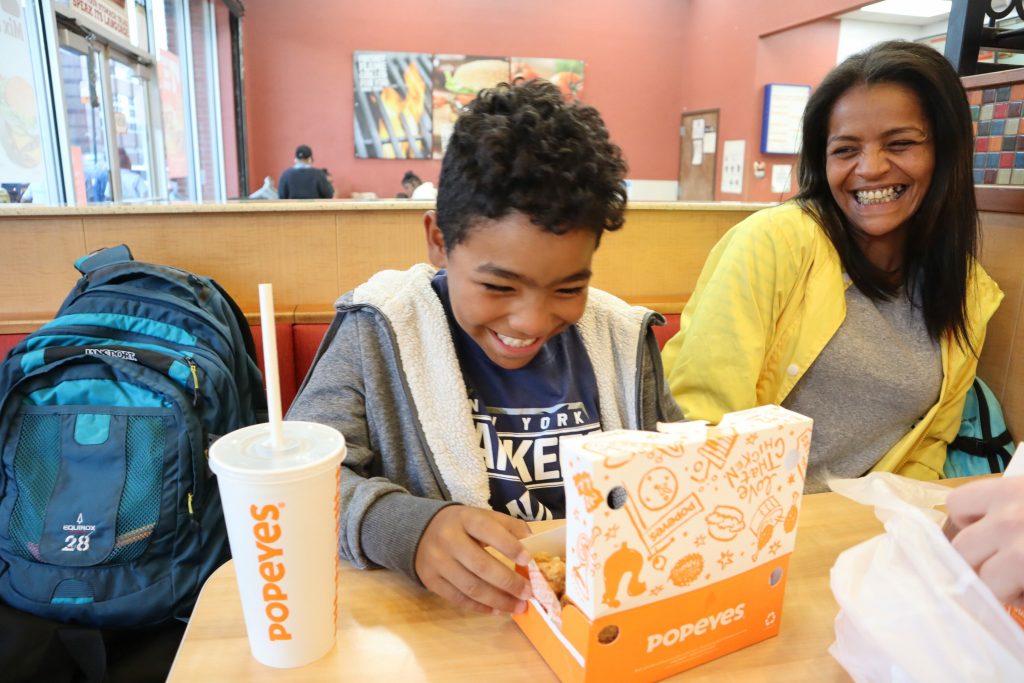
The Department of Social Services did not respond to a request for comment.
Still, Kenyon is enjoying school. Many of the teachers there speak Spanish, Kenyon said, and he has built a community with other children. “I like my school because I have a lot of friends,” he said. “There are more people like me – kids, kids from Venezuela who understand me.”
But he struggles especially in the after school program. There, he says, teachers don’t speak Spanish, so he relies on other children to translate for him. “One of my classmates doesn’t speak English either,” Kenyon said. “And we have to tell a friend to translate for us. Because if not, we won’t understand and we won’t be able to do what the teacher told us to.”
The Department of Education declined to comment on the record about the availability of Spanish speaking teachers in after school programs.
Wallach, of Advocates for Children, said that having enough bilingual providers has been a “longstanding challenge” with the Department of Education.
The number of available bilingual providers “remains important and pressing, given the high numbers of newcomer immigrant students,” Wallach said. “There needs to be people at every school welcoming newcomer families who speak the languages of the parents and the students, and it needs to be a safe and comfortable space for these people.”
For Kenyon, learning English has been a difficult, but sometimes welcome challenge. He especially likes his English teacher, who sometimes helps them learn the language by playing games with the students, he said. But Kenyon is recurrently reminded of the extensive emotional and physical bullying he had to endure in Ecuador, where they lived for two years before heading to the United States, Vazquez Rico and Kenyon said. “I would come back from school crying, because they would kick me, and hit me,” he said. “I’ve just always wanted to be friends.”
Migrant families looking for more than just language help for their children
Educators in New York say they are working quickly to meet the varied needs of recently arrived migrant children in their schools, including at PS 16 Wakefield in the Bronx, where Principal Latanya Gray says the school is used to having students who may be transitioning.
“Knowing some of those routines and strategies to use in the classroom to support students who might speak another language other than English is huge, and it is one of the big things that we’ve been focused on since we’ve received the new students,” she said.
The school has leveraged district leadership and support to provide special development to teachers, and has advocated for additional resources, Gray said. PS 16 saw a “tremendous influx” of students in temporary housing enrolled in the school, with up to 39 new students coming to the school in a short period of time, Banks, the Chancellor of Education, said in October.
And it’s not just in language education where schools have had to step up and provide assistance to students. “Trauma has started to show up for children. And it could be triggers that have nothing to do with anything negative, but it could be a trigger,” Gray said. Recently, the school brought in a bilingual social worker and a bilingual guidance counselor.
Vazquez Rico, Kenyon’s mother, said that school staff and the shelter social worker sometimes check in on her and Kenyon on a more surface level, but that the family has not yet encountered more comprehensive services for Kenyon’s emotional well-being.
“It worries me,” she said about how Kenyon’s mental health is doing. “It would be good for him to see a professional.”
Kenyon is taking his new life day by day, focusing mostly on his schoolwork. But when he’s older he wants to become a professional baseball player, so when he has time, he goes to practices near Yankee stadium.
When he left home, Kenyon had a vision of what his life would look like in the U.S. — but the reality hasn’t lived up to that yet, he said. “I’d like for my mom to be able to work, she’d be able to buy me things, I could have my own room,” he said. Even so, Kenyon is full of optimism about what life in New York could mean for his family. “I feel more motivated here because of what all the Venezuelans want – the American dream,” he said.
Rosario Marina contributed reporting to this story.
